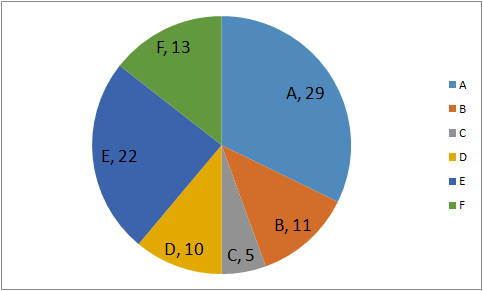1.
The pie chart shows the share of tiger population six Wild life sanctuaries (A, B, C, E, E, F) of a country. Study the diagram and answer the following questions.
 Which wild life sanctuary has more tigers than D but less than F?
Which wild life sanctuary has more tigers than D but less than F?
Show Similar Question And Answers
 Powered By:Omega Web Solutions
Powered By:Omega Web Solutions